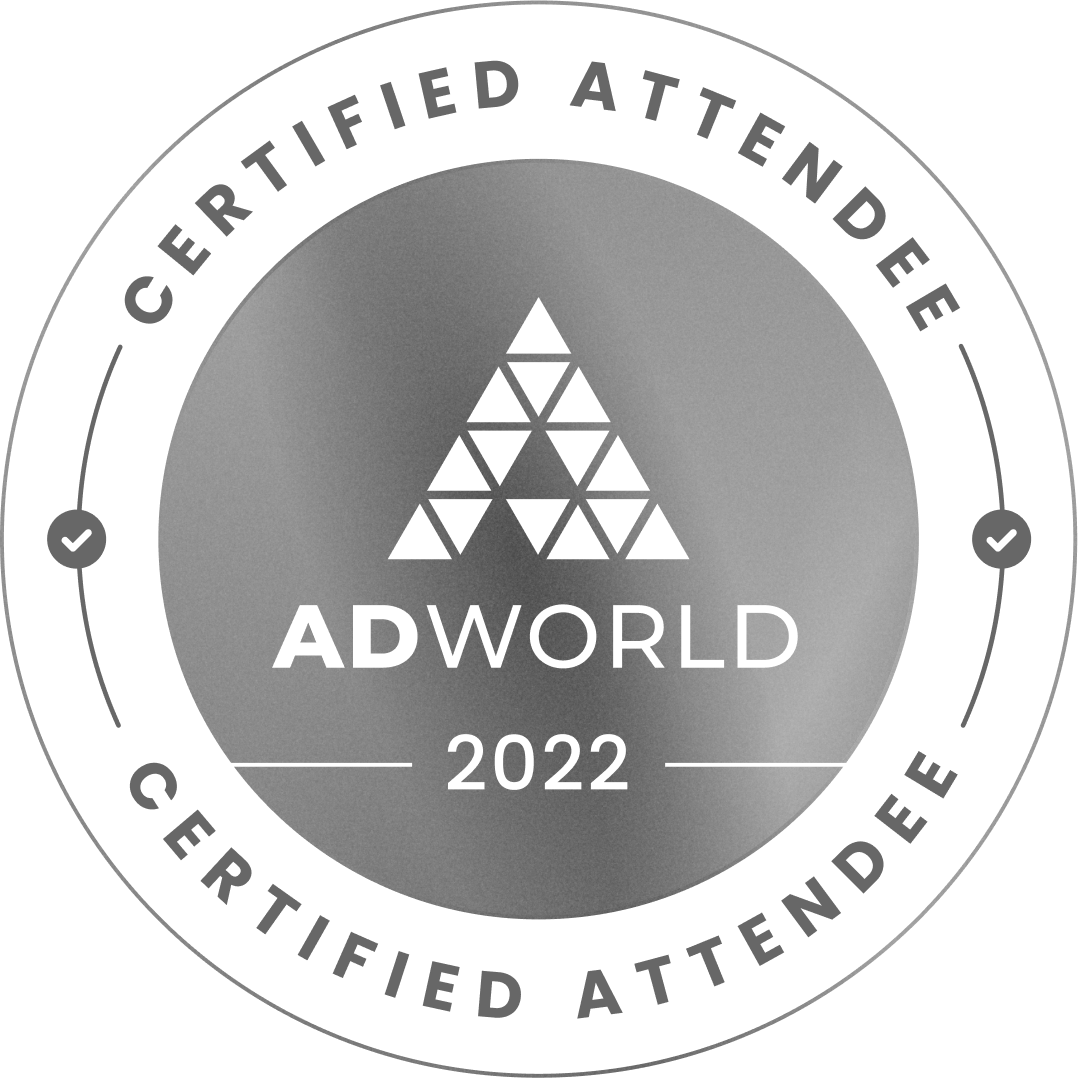Digital Marketing for SaaS
Our no-nonsense and, yes, somewhat biased list of the most effective marketing strategies for B2B SaaS brands.


What Makes Digital Marketing So Important for SaaS Companies
Whether your software’s appeal is widespread or limited to a small niche, there’s no way your brand will make a significant anniversary without a solid SaaS marketing plan.
Digital marketing plays a critical role in customer acquisition and retention for SaaS businesses, especially in the long and complex B2B buyer’ journey.
So, what we’re doing today is sharing our take on how to effectively market your B2B SaaS product—that means minimal risk and maximum return.
How Our Clients Did Last Month
Month-over-month traffic trends. Source: Google Search Console
What You’ll Need to Get Your SaaS Marketing Plan Started
What we’re saying is that if you can’t cross these things off your list, you need to take a step back and make sure you’ve at least got these basics covered. You won’t be able to develop an effective software marketing strategy without them, so there’s no point in skipping ahead:
Proper Analytics & Tracking Setup
How do you know how far you’ve come if you don’t know where you started? It’s an oversimplification, of course, but the idea is that you must decide what to track and learn how to set up tracking properly.
Only with the right setup can you begin to really enjoy the benefits of all that data.
The Best SaaS Marketing Tools & Software
Imagine how impossible it would be to develop your software without the right tools. It’s the same thing as marketing. Even the best artists in the world need their paint and brushes and easels, so if for some reason you’re holding yourself and your team back from investing in some B2B marketing software, stop the nonsense right now.
As a B2B SaaS SEO agency, we rely on various tools to help us do our jobs better, faster, and more efficiently. It’s not because we don’t know what we’re doing and we’d be lost without them, but because who the heck wants to spend hours manually entering data into spreadsheets?
For the marketing channels we’re talking about today, consider investing the following tools (don’t worry, we are affiliate-free!):
- Google Analytics
- Google Search Console
- Ahrefs
- SE Ranking
- Google Ad Manager
- Email campaign platform (e.g. Mailchimp, Constant Contact, Hubspot)
- Content management system (CMS)
- Audio-visual recording devices
- Canva or Adobe Creative Suite (or similar)
Your Audience Profile
Unless there’s a bottomless well of gold at your disposal (and if there is, please be kind enough to share that information), your marketing budget will be limited. You can save thousands by nailing down a few essential details before you start marketing your software…like, your target audience.
It’d be pretty incredible if you made it this far without an audience profile, but now it’s time to fill in more details.
You may know everything there is to know about Craig the Middle Manager’s pain points, but what about Craig’s Google Search and social media habits?
Why do you need to know this?
Figuring out where your target audience spends its digital time will help your team improve your marketing ROI.
A SaaS Marketing A-Team
If you’ve decided not to outsource your campaigns to software marketing agencies, you’ll need a team to handle everything from market research to data analysis to creative to management.
Based on our recommendations below, you’ll need these people on your roster:
- SEO strategist
- PPC/Ad manager
- Technical SEO/CMS specialist
- Javascript, CSS, HTML specialist
- Web designer
- Content writer
- Social media expert
Now that you’ve got the marketing A-team, here are the top SaaS marketing strategies to boost your ROI:

Make Your Brand as Visible as Possible with Search Engine Optimisation
Well, well, well, if it isn’t the thing that makes this list reek of favouritism. SEO for SaaS, a.k.a. Geeky Tech’s primary service offering, is by far still one of the most effective marketing strategies out there.
Google processes 8.5 billion searches every single day, so why wouldn’t you want to capitalise on a channel you know your potential customers are using whilst at work?
Benefits of SaaS SEO
Why do some SaaS companies spend upwards of £100k every month on search engine optimisation? Because it really works:
Increase the Quantity & Quality of People Viewing Entering Your Site
SEO attracts more visitors through higher search engine rankings. The higher you rank, the more visible you are. But with a strategic keyword approach, SEO also weeds out untargeted traffic, which boosts your conversion rates, lowers your bounce rates, and increases the number of leads in your funnel.
Enhance Brand Visibility & Authority
The more people see your site on search engines, the more your brand will be perceived as an authority in your SaaS niche.
Building trust and authority is one of the primary goals of SEO because sites that have proven their authority and credibility (through awesome content, backlinks, and a half-decent website) are rewarded with more visibility.
Maximise Your Budget and Marketing Effort
Not only does (good) technical SEO provide long-term results without the continuous costs of paid advertising, but the insights gained from your SEO analytics can also help you reduce unnecessary spending on advertising to the wrong people on the wrong platforms. Now that’s the kind of arithmetic we like to do!
How to Optimise Your Site
Search engine optimisation is the process of ranking high on search engine result pages (SERPs) for search queries your target audience uses to find your software solutions.
Here’s the breakdown of how SEO works:
Keyword Research & Strategy
Now it’s time to take what you know about Craig the Middle Manager and apply it to SEO. This vital aspect of search engine optimisation requires you to know who your customers are and what phrases or terminology they use to search the internet.
Knowing this much allows you to figure out which companies are currently ranking for those terms. Once you figure out who your real competitors are, you’ll figure out if your site can currently compete with them, and then develop a content strategy to do just that!
On-Page SEO
The goal of on-page SEO is to tweak individual web pages to increase the chance that they will rank higher and earn more relevant traffic. Page optimisation is achieved by improving your content quality, knowing where to put your keywords, and ensuring an overall exceptional user experience.
Here is an example of on-page SEO best practices to give you a better idea about what is considered the best use and position of your primary and supporting keywords.
On-page SEO is also concerned with the readability of your individual pages, so image descriptions, formatting, headers, internal and external linking, and user experience all fall under this category.

Technical SEO
If your website were a robot, technical SEO would be its wires, screws, and hard plastic guts. Technical SEO makes sure your site is not only working properly, but well.
Your technical SEO specialist maintains site speed, mobile-friendliness, structured data/schema, redirects, and overall site performance.
Technical SEO is really geeky—verging on boring—for anyone who isn’t in the industry, and since it’s only concerned with what goes on behind the curtain, many marketers might overlook technical optimisation.
But that would be a mistake. You see, even a small technical issue has the power to make your website completely invisible to search engines (it’s a real thing that happens all the time).
If you don’t have a technical SEO specialist in your lineup, ask us for an audit.
Link Building
Also known as off-page SEO, link building is the process—nay, the art—of getting links, mentions, and referrals from other sites in your industry in order to signal your domain authority.
Like in the real world, the more respected/known/liked a company is, the more positive buzz it generates—not just from its clients, but from other domains that are related to it.
For example, if your architecture firm was mentioned by a world-renowned interior designer, the mention shows Google that your domain is associated with a related high-profile site, therefore, your architecture firm must also be credible and authoritative.
We oversimplify, of course, but you get the idea: to boost your SEO, you need a high volume of links, mentions, and referrals from other relevant and high-authority sites.

Is SEO Right For Your SaaS Brand?
The only way we’d say “no, you don’t need SEO,” is if your marketing team was aiming to make your brand so underground, that anyone who tried to find it online needed a secret password that was checked by the digital equivalent of a scary looking bouncer with a clipboard. Like a digital speakeasy. But, like, why would you want to make it harder for people to find you?
What we’re trying to say is, SEO isn’t a nice-to-have marketing strategy. It’s an essential digital marketing practice.

Set Your Brand’s Tone With a SaaS Content Marketing Strategy
Now it’s time to create and distribute valuable and relevant content to attract and engage your audience, and ultimately drive leads down the funnel.
Content marketing involves producing various types of content tailored to the needs, interests, and pain points of potential and existing customers. Your goal as a SaaS content marketer is to showcase your software’s benefits, educate users, and establish your brand as a leader in the industry.
Content That Has the Highest Impact on Your B2B Software Audience
If you’re selling software-as-a-service to a B2B audience, you want to create content for every stage of the very long sales funnel.
Awareness Content (Top-of-Funnel)
Blogs and articles are informative and insightful posts that cover industry trends, how-to guides, and best practices related to your software.
If you want to go a little deeper, whitepapers and e-books provide detailed and fully developed information on specific topics, which showcases your expertise and thought leadership.
Infographics offer a visually appealing way to present complex information in an easy-to-understand format that’s shareable across multiple platforms.
Consideration-Stage Content (Mid-Funnel)
Interactive tools like calculators, quizzes, and other gamified content that engages users and provides personalised insights related to your software is a great way to keep your leads engaged with your brand.
Step into the director’s chair! Short explainer videos that show off benefits, features, and use cases in a concise and engaging way are perfect bits of content for this stage in the funnel.
Decision-Stage Content (Bottom-of-the-Funnel)
Case studies boost your brand’s authority and trustworthiness, as they offer real-life examples of how customers have successfully used your software to solve their problems.
Product demos and video tutorials that demonstrate your software dashboard, as well as the key features and functionalities, give potential clients the final push to make a decision to invest in your solution.
And when your leads become customers, the content doesn’t (and shouldn’t) stop. To maintain customer satisfaction and loyalty, your writers will need to continually produce content, such as:
- Newsletters
- FAQs and resource hubs
- User Guides and Manuals
How Content Marketing and SaaS SEO Are Linked
Content and SEO work together to drive organic traffic and convert visitors into customers.
SEO begins with thorough keyword research, which leads to the creation of high-quality and keyword-rich content. By writing content with a keyword focus and user intent in mind, you enhance both your site’s visibility and user experience.
High-quality content also naturally attracts backlinks from reputable sites, which signals to search engines that your site is authoritative and trustworthy.
And don’t forget that user engagement metrics like bounce rate and user sessions are positively influenced by well-crafted content. This synergy between content and SEO is crucial for attracting, engaging, and converting your target audience.

Invest in Faster Results with Advertising
Want to accelerate your brand growth and achieve faster visibility? Why not invest in advertising?
By targeting your audience through ad campaigns, you can quickly reach more ideal customers and have an immediate boost on your traffic, demos, and/or conversions.
The advantage of advertising is that it places your SaaS product directly in front of potential users who are actively searching for solutions, ensuring your brand stands out in a crowded market.
Pros & Cons of Advertising
Pros
- Precisely targets your audience to lower your costs.
- Gives back detailed analytics and performance metrics, which enables you to track ROI and adjust campaigns in real-time.
- Data collected can be used to strengthen SEO.
- Campaigns can be easily adjusted, paused, or scaled up/down based on performance and budget constraints.
- Encourages direct interaction with your audience through clicks, comments, shares, and likes.
- Various platforms can diversify your advertising strategy and reach different segments.
Cons
- The more competitive your industry is, the more expensive your ad placements will be.
- Traffic stops as soon as you stop paying for ads.
- Requires the skills and knowledge of an ad manager.
- Increasing regulations are starting to limit data collection and targeting capabilities.
- There’s still a risk of click fraud. Yay!
- Ad saturation can lead to ad blindness.
- Many people use ad blockers, which reduces the effectiveness of your campaigns.
Most Effective Types of Software Advertising
- Pay-Per-Click (PPC)
- Social Media
- Display
- Video and podcasts
- Affiliate marketing
- Programmatic AdvertisingSponsorships
- Sponsorships
A Closer Look at the Power of Advertising: A Case Study
We took this MedTech’s CPL from $10.5k to $2k and boosted MQLs by 880% in Just 12 Months
- Yearly $50k ad spend was too small to compete in a highly competitive market.
- The budget was spread too thin over multiple keywords.
- No clear strategy to guide leads down the funnel.
- Ads failed to attract or nurture key decision-makers, which meant poor conversion rates and more wasted budget.
- Switched their siloed ads to full-funnel campaigns from discovery to retargeting.
- Switched to programmatic display advertising to eliminate budget waste from broad display targeting.
- Shifted from informational intent keywords to commercial intent keywords.
- Doubled the yearly budget mid-year from $53k to $113K to allow for more experimental strategies.
- 880% increase in MQLs (YoY)
- 76% decrease in cost/MQL from $10,581 to $2,312
- 19,304 clicks on ads or 93% increase in traffic
- Significant improvement in MQL quality
Paid Media or SEO?
It’s the oldest question in the book. Ultimately, the choice between investing in paid media or SEO often depends on your goals, budget, timeline, and other resources.
Paid media is ideal for achieving quick wins and immediate visibility, especially during product launches or promotional periods.
SEO, on the other hand, is a long-term investment that builds sustainable organic traffic and brand authority over time.
Call us biased (again), but we feel that a strategy that combines both SEO and PPC provides the best results because it combines the immediate impact of paid media with the lasting benefits of SEO.
Build Community with Social Media Marketing
While social media isn’t always the first marketing channel B2B companies think of, building a community on social media is crucial for your B2B SaaS brand.
Your social media presence increases brand visibility, engagement, and trust while providing valuable opportunities for lead generation, customer support, and (of course) networking.
Plus, it has the added advantage of humanising your brand by giving your employees a voice and letting people see the company culture.
How to Build Your Brand on Social Media
Social media is the perfect platform to engage with your customers, prospects, and industry influencers.
The type of content you share on social media platforms—like blog posts, case studies, webinars, and industry news—positions your company as a thought leader and authority.
The more high-quality social content you push out, the more you’ll engage directly with your audience. Regular interaction—e.g., joining online discussions—helps build trust and loyalty, as customers feel more connected to your brand and its values.
Additionally, social media provides a platform for showcasing customer success stories and testimonials, which not only validate your SaaS brand’s credibility but also create a sense of community among users who share similar experiences and challenges. Engaging with customers through polls, Q&A sessions, and live events make customers feel seen, heard, and valued.
Build Brand Awareness With Email Marketing
Some people are still shocked when they hear that the humble email is still effective because, as individuals, we all know how often we delete unopened emails from various brands offering promotions or sending updates that we don’t necessarily care about.
But, your B2B customers do open their emails. That’s why almost 40% of brands increased their email budget in 2023 and why 87% of brands say that email marketing is fundamental to their business.
Not sure if email marketing is your bag, baby?
Maybe these main advantages will change your mind:
Send out Targeted & Personalised Communication
One of the best things about email marketing is its ability to segment your audience. Segmentation allows your team to send out highly targeted and personalised communication, which ensures the right message reaches the right person at the right time.
Because of this, segmented emails have higher open and click-through rates.
Nurture Leads the Easy Way
It’s easy to nurture leads when you work with segmented lists. Thanks to marketing automation, your SaaS brand can guide prospects through the sales funnel, while providing valuable content and information at each stage.
This continuous engagement helps build awareness and trust, and keeps your software solution top-of-mind when your prospect is ready to make a purchase decision.
Build & Maintain Relationships
Emails are the most straightforward way of keeping your contacts up to date. When you regularly (but not too often) communicate through newsletters, updates, and personalised messages, your company will promote a sense of connection and loyalty.
Track & Measure Your Results with Ease
One of the most significant benefits of email marketing is the ability to track and measure the results of your campaigns.
Open rates, click-through rates, conversion rates, and unsubscribe rates give your team valuable insights into the effectiveness of your campaigns. And testing your emails will give you an even better idea about what designs, subject lines, and send frequencies give you the best responses.
Drive Traffic & Engagement
Email marketing is another way of driving qualified traffic to your site. By including links to valuable content, case studies, and product updates, your emails encourage recipients to engage further with your brand, which, of course, boosts your conversion rates.
Email Campaign Best Practices
Of course, it would be a lie if we said that emails are one hundred percent effective one hundred percent of the time. Every day, we all get pummelled by emails from companies we didn’t even know had our contact details, so with so much email inundation, you’ll have to grab your recipient’s attention fast before they chuck you in the bin, site unseen.
Follow these best practices for higher success rates:
- Segment, segment, segment.
- To boost your open rate, personalised subject lines that pique curiosity and create a sense of urgency work best.
- Focus on informative and useful information.
- Make your email design mobile-friendly and responsive.
- Use an appealing layout with a balanced mix of text and visuals.
- Figure out the best times and days to send emails (Tuesdays are usually the best), and find the right sending frequency (usually less is more).
- Continuously A/B test elements like subject lines, CTAs, and images.
- Clean your email lists to remove inactive or incorrect addresses.
- Set up drip campaigns to nurture leads with relevant content at each stage.
- Implement trigger-based emails for specific actions or behaviours.
Take Your SaaS Growth to the Next Level
There’s more than one way to reach your target audience. As an SEO and content marketing agency for enterprise software, Geeky Tech has first-hand experience in developing strategies that consistently deliver the highest ROI.








